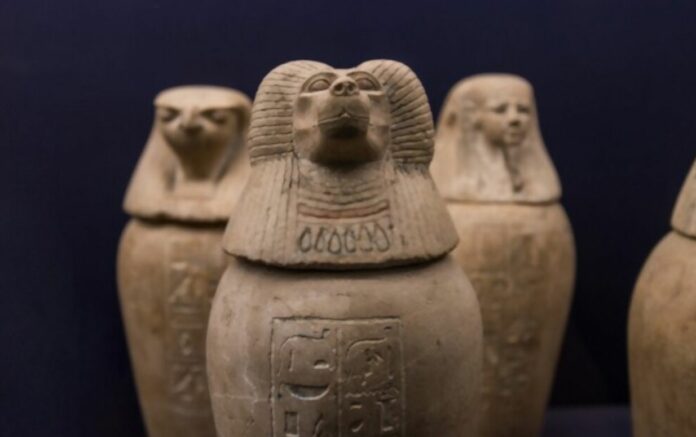A recent study published in Scientific Reports provides fascinating insights into the contents of six ancient Egyptian animal coffins. These coffins were imaged using a non-invasive technique, revealing their contents without the need for invasive methods.
The practice of mummifying animals was a common one in ancient Egypt, and this study sheds light on the possible reasons behind it. According to previous research, some of the mummified animals were thought to be actual physical embodiments of gods, while others may have been used as offerings or in ritual ceremonies.
In this new study, Daniel O’Flynn and his team utilized neutron tomography to capture detailed images of the contents of six animal coffins that had previously remained sealed. Unlike previous attempts with x-rays, the technique, which creates images based on the passage of neutrons through objects, proved successful in producing high-quality visuals.
All six of the copper compound coffins are considered rare finds, with sealed versions being particularly uncommon. Of the six, three have been identified as originating from the ancient city of Naukratis and are adorned with lizard and eel figures, as well as loops. Carbon dating has revealed that these three coffins date back to a period between 500 and 300 BCE, offering a glimpse into a fascinating time in history.
A fourth coffin with a lizard figure on top was found in the old city of Tell el-Yehudiyeh. It dates back to between 664 and 332 BCE.
In addition to the lizard-topped coffin, two other coffins with part-eel, part-cobra figures with human heads were also uncovered. These two coffins are estimated to date back to a period between roughly 650 and 250 BCE, but their origin remains unknown.
Further analysis by the researchers revealed bones inside three of the coffins, including a skull that was still intact and had similar dimensions to those of a group of wall lizards found in North Africa. The remaining two coffins contained evidence of broken-down bones. The discovery has raised interesting questions about the cultural significance and symbolism behind the figurative adornments on the coffins.
In addition, they detected pieces of fabric in three coffins that could have been composed of linen, a material frequently utilized in the embalming process of Ancient Egypt.
According to their proposal, the animals could have been wrapped in linen prior to being positioned inside the coffins. The authors discovered lead in the three coffins that lacked loops, and they hypothesize that the lead was utilized to balance the weight distribution in two of the coffins, and to patch up a hole in the third one.
The researchers say that the choice of lead might have been influenced by its mystical significance in ancient Egypt, as prior investigations have indicated that lead was utilized in love spells and hexes.
The researchers did not find any extra lead in the three coffins that had loops on top. They propose that these coffins may have been suspended from the walls of shrines or temples, statues, or boats used in religious processions, whereas the heavier coffins that contained lead and lacked loops may have been intended for different purposes.
These discoveries contribute to a better understanding of the production and function of animal coffins in ancient Egypt.
Image Credit: Shutterstock
